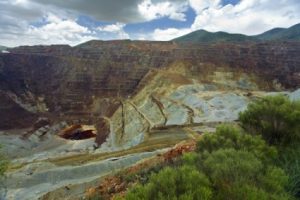While it may seem like a strange thing to study, a recent news feature from Science Daily looks at whether asbestos can move in soil, and there is a very important reason for this study. The general belief, as it has been for many years, is that asbestos fibers cannot move when they are in soil. As the new study suggests, this may not be true, and that is a serious problem.
 In many parts of the country, there is soil that is filled with deadly asbestos fibers. Some of these contaminated areas are a result of landfills at a time when asbestos was regularly thrown away with ordinary trash and construction waste. Today this is illegal and a violation of the federal Clean Air Act. In other cases, we have soil deposits from asbestos, vermiculite, talc, and other types of mining operations. If were talking about a strip mine in which the soil is stripped away on the surface rather than having a mine shaft dug, the asbestos contamination in soil could be much worse.
In many parts of the country, there is soil that is filled with deadly asbestos fibers. Some of these contaminated areas are a result of landfills at a time when asbestos was regularly thrown away with ordinary trash and construction waste. Today this is illegal and a violation of the federal Clean Air Act. In other cases, we have soil deposits from asbestos, vermiculite, talc, and other types of mining operations. If were talking about a strip mine in which the soil is stripped away on the surface rather than having a mine shaft dug, the asbestos contamination in soil could be much worse.
Since it would be dangerous and not practical to dig up the asbestos and haul it away, the common solution is to do what is known as capping the asbestos waste material. The way waste is capped is that a very large quantity of soil is placed over top of the waste so that it can act like a protective cap that seals the asbestos fibers in the ground. This would work if the asbestos fibers could not move through the soil.
However, what this new study suggests is that the asbestos fibers can bind with organic matter found in the soil. This will create an electric charge in the particles, and the asbestos is easily moved around, even under large quantities of soil. It can move up through the soil causing surface contamination. The charged asbestos fibers can also find their way to a flowing water source and can create a significant contamination problem that eventually affects human drinking water supplies.
While most people are aware these asbestos fibers are deadly when inhaled, these fibers can also be ingested when mixed with drinking water, and that can lead to malignant mesothelioma, as Boston asbestos injury attorneys have seen in various cases.
The capping method is still being used, as it is the best method available, and there was a long-standing belief that the asbestos fibers could not move throughout the soil. This is the method that the United States Environmental Protection Agency (EPA) has and still does use when cleaning up asbestos superfund sites across the country. While this new study does challenge the long-standing knowledge, it is the first of other studies into this phenomenon, and hopefully there will be a more definitive answer in the future. In the meantime, the EPA will do what it can do prevent unnecessary exposure to the deadly asbestos fibers. There are still many sites that are filled with asbestos debris, and this problem will not be solved in the immediate future.
If you or a loved one is diagnosed with mesothelioma in Boston, call for a free and confidential appointment at (617) 777-7777.
Additional Resources:
New study challenges assumption of asbestos’ ability to move in soil, August 19, 2016, Science Daily
More Blog Entries:
New Effort to Strengthen Asbestos Litigation, June 28, 2016, Boston Mesothelioma Lawyer Blog
 Mesothelioma Lawyers Blog
Mesothelioma Lawyers Blog

